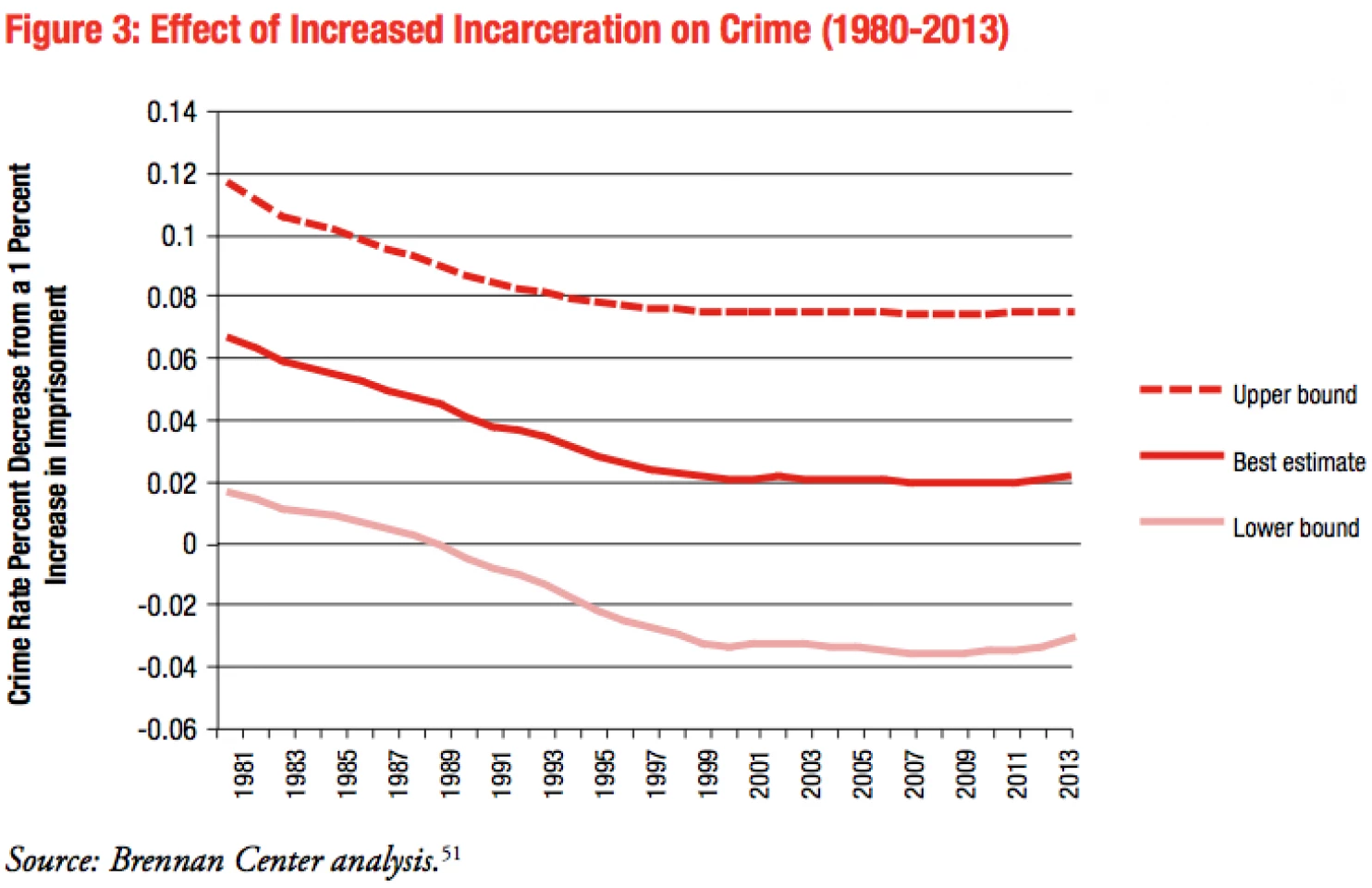Criminal Justice Statistics
The MoJ recently (19 February 2015) published its latest Criminal Justice Quarterly Update. The report presents key statistics on activity in the criminal justice system (CJS) for England and Wales for the latest 12 months (October 2013 to September 2014) with accompanying commentary, analysis and presentation of longer term trends.
This publication is well worth a browse and the current edition reveals a number of key, contradictory, trends set out below.
[divider]
Crime low, sentencing high
Regular readers will know that I blog regularly on crime figures and often highlight the fact that while crime has reduced steadily over the last twenty years the prison population has increased, almost in inverse proportion. This is despite the fact that we know the contribution to reducing crime that incarceration makes is negligible at best, as this recent analysis from the Brennan Center for Justice shows:
 This phenomenon is borne out in some of the findings of the report with the lowest number of offenders on record but those in the system being sentenced to longer periods of imprisonment.
This phenomenon is borne out in some of the findings of the report with the lowest number of offenders on record but those in the system being sentenced to longer periods of imprisonment.
Here are some of the key findings:
- The number of individuals formally dealt with by the CJS is the lowest on record (1970 to date).
- The number of first time entrants formally dealt with by the CJS continues to decline. This is a 52% decline since year ending September 2007 and 81% for juveniles.
- The immediate custody rate for indictable offences (just under 28%) is the highest in a decade and has increased in each of the last four years.
- Average Custodial Sentence Length continues to increase since September 2006. In the latest period it was 15.8 months compared with 12.3 months in year ending September 2006.
Other noteworthy trends captured by the report include:
- The use of out of court disposals is now less than half of the peak, in year ending September 2007 and decreased 16% in the latest year.
- The number of offenders with no previous convictions or cautions sentenced for indictable offences has increased by 4% in the 12 months ending September 2014.
- There was an 18% increase in the number of adult offenders given suspended sentences despite having 15+ previous cautions or convictions.
- Prosecutions for sexual offences are the highest in a decade and increased by 11% in the latest year.
- The conviction ratio has remained relatively stable since year ending September 2009 (following on from an increase in the 5 years preceding this). In the latest year it was 83% compared to 82% in previous year.
To summarise:
Crime is down, there are fewer offenders, but the prison system remains overcrowded since people are serving longer sentences.






